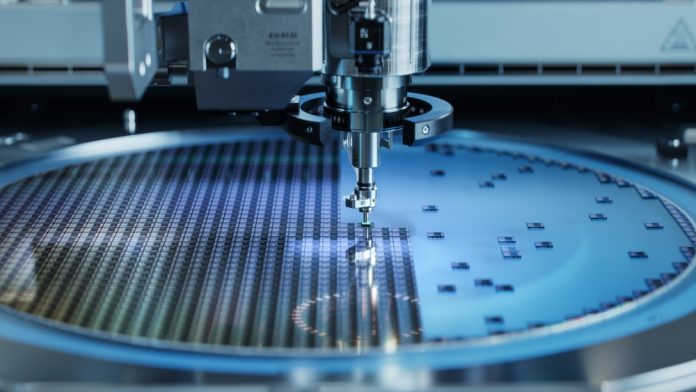The semiconductor manufacturing industry, a cornerstone of modern technology, relies heavily on helium due to its unique properties.
Helium’s role in this sector is indispensable, especially in the context of wafer cooling, where its cryogenic abilities are unmatched. With semiconductor manufacturing poised for significant growth, driven by initiatives like the US Chips Act and EU Chips Act, the demand for helium is set to soar.
According to a recent report by IDTechEx, helium demand in semiconductor manufacturing is expected to increase five-fold by 2035. However, the finite nature of helium raises concerns about the sustainability of this critical industry.
Helium’s vital role in semiconductor manufacturing
Helium is essential in various stages of semiconductor manufacturing, primarily because of its high thermal conductivity and inert characteristics.
Its ability to rapidly cool down chips during the production process makes it irreplaceable, particularly as semiconductor nodes become smaller and more efficient.
As the semiconductor industry pushes the boundaries of technology with advancements in AI, quantum computing, and automotive automation, the need for enhanced thermal management becomes more critical.
This is where helium plays a key role, ensuring that chips are produced at optimal conditions without the risk of overheating.
With emerging industries such as electric vehicles and 5G telecommunications driving semiconductor innovation, helium demand is set to escalate dramatically.
The challenges of helium supply shortages
Despite its importance, the helium market has faced persistent supply shortages over the last two decades.
These shortages, exacerbated by geopolitical tensions, plant outages, and maintenance issues, have led to price fluctuations and supply chain disruptions.
Semiconductor manufacturers, in response, have had to adjust production rates during periods of helium scarcity to manage costs and resource availability.
Although increased helium production is expected, particularly from countries like Qatar and Russia, supply security remains uncertain.
These regions are often fraught with geopolitical instability, which could further jeopardise the availability of helium.
The United States Geological Survey estimates that the total global helium reserves stand at around 40 billion cubic meters.
At the current rate of production, this could last approximately 250 years. However, with rising helium demand in semiconductor manufacturing, this timeline could be shortened significantly.
Exploring helium recycling and sustainable solutions
Given the finite nature of helium, sustainability is becoming a pressing concern for the semiconductor manufacturing industry.
Other sectors, such as fibre optics and cryogenics, have already begun adopting helium recycling methods to mitigate supply challenges.
IDTechEx’s report highlights the growing trend of helium reclamation in industries like aerospace and automotive leak testing, driven by the need to manage rising helium costs and unpredictable supply chains.
In semiconductor manufacturing, helium recycling is still in its infancy. However, as the industry grapples with supply shortages and the rising cost of speciality gases, the adoption of reclamation technologies is likely to become more widespread.
Investing in helium recycling systems could offer a sustainable way for semiconductor fabrication plants to meet increasing helium demand while mitigating the impact of future supply disruptions.
The road ahead: Balancing growth and sustainability
While expansions in helium production may ease some supply challenges, the industry must prepare for potential shortages in the future.
With helium demand projected to skyrocket by 2035, semiconductor manufacturers must explore alternative strategies, including the implementation of helium recycling technologies, to ensure long-term sustainability.
As helium demand continues to rise, industries will need to innovate and adapt to secure a stable, sustainable future for semiconductor manufacturing.









